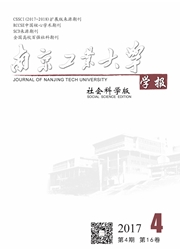

 中文摘要:
中文摘要:
由一个制造商和两个零售商组成的供应链中,就无通道费、一次性付清固定通道费、无固定数量和有固定数量的线性通道费四种情况建立了理论模型。结果表明:固定通道费并不影响产品最终价格和数量,通道费实质是零售商依靠自身拥有的零售市场力量从供应商获得的一部分利润。市场规模变化所带来的零售价格和批发价格的变化幅度比通道费系数变化所带来的两者的变化幅度大得多。市场规模越大的零售企业,采用线性通道费时所获利润越多。固定部分通道费使零售商分享了更多供应商的利润。
 英文摘要:
英文摘要:
This paper presents a theoretical model on slotting allowance in the supply chain consisting of one manufacturer and two retailers. This model is developed on the basis of four conditions : no-slotting allowance, lumpsum slotting allowance, linear slotting allowance with fixed amounts, and linear slotting allowance without fixed amounts. It is found that the fixed slotting allowance doesnt influence the final product price and quantity. In essence, slotting allowance is one part of the profits obtained by retailers from the supplies through the market power they process. Finally, the variance of retail and wholesale prices brought by the change of market scale is much greater than that brought by the change of slotting allowance ratio. The bigger market scale a retail enterprise possesses, the more profits it will obtain when the slotting allowance model is taken. Fixed slotting allowance makes it possible for retailers to earn more profits from suppliers.
 同期刊论文项目
同期刊论文项目
 同项目期刊论文
同项目期刊论文
 期刊信息
期刊信息
